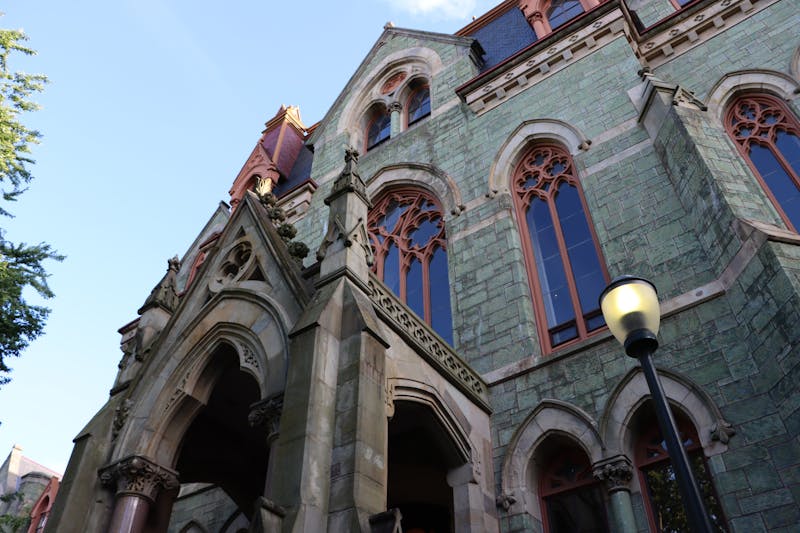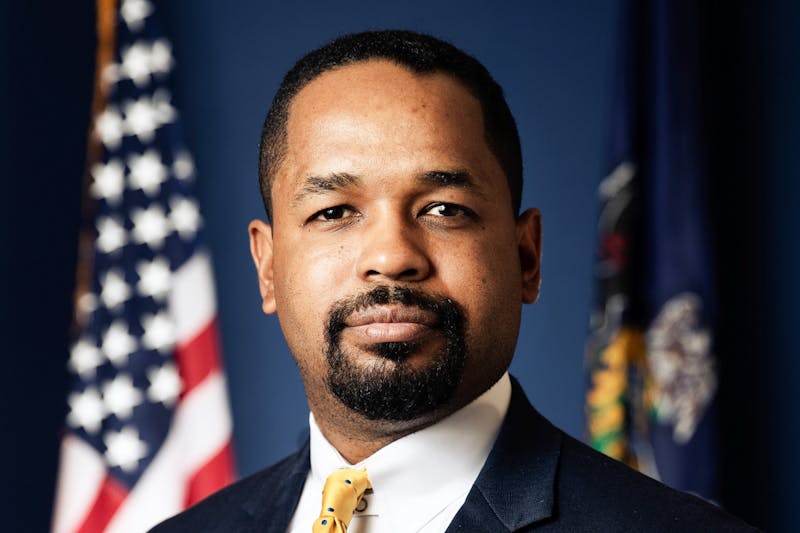Penn eyes another round of expansion - towards the Schuylkill For the past 30 years, the University has slowly expanded its campus westward all the way to 40th Street. But now, Penn is running out of room. Officials have pledged to the community that the completion of Hamilton Village at 40th and Walnut streets will mark the end to their western ventures -- leaving an ever-expanding University in a very limited space. Bounded to the north by Drexel University, and to the south by biomedical and health care facilities, there is only one option left for administrators eager to fulfill what they see as Penn's manifest destiny: a campus extending from the Schuylkill River to 40th Street. And so the University has turned its focus in a different and less-familiar direction: east. "We're landlocked," Executive Vice President John Fry said. "This is the only place for the University to expand." Last year, Penn took its first steps eastward, with the announcement of projects at 34th and Chestnut streets and 31st and Walnut streets. But the key to major and prolonged eastward expansion lies less than a mile away from College Hall -- the 30th Street United States Postal Service property. For years, Penn has eyed the 30th Street location, which is scheduled to be put up for sale once the mail-processing facility at the current site relocates in three years. There likely won't be another opportunity for decades to make the same kind of impact to Penn. "This truly is one of the University's highest priorities," Fry said. For Penn, that land could mean a facility geared toward bioengineering -- rivaling the Research Triangle in Raleigh, N.C. -- another retail hub, more room for student and faculty housing and perhaps a place for a long-hoped-for recreation field house. But the University isn't alone in its desire for the land. According to Fry, who leads all non-academic aspects of the University, several institutions have redevelopment plans for the 23-acre property -- particularly for the 14-acre tract of land that lies to the south of Walnut Street. Fourteen-acre lots are hard to come by in West Philadelphia. And over the next 12 to 24 months, the Post Office will conduct a study -- with the help of Drexel, Amtrak and the city -- to determine the best future uses for the land and its neighbors. "This is not just another piece of property," Fry said. "This is the future envelope of our campus." The Postal Service uses the equivalent of four large city blocks for its post office, regional headquarters and parking, loading and vehicle servicing. Yet it's not just the size that makes the land attractive. Located next to 30th Street Station, neighboring the Schuylkill River and just over the bridge from Center City, the Postal Service lands give new meaning to the phrase "location, location, location." "Transportation-wise, it's just ideal," Postal Service spokesman Paul Smith said. Calling the post office the "cornerstone of Philadelphia," Smith added that the property -- convenient for commuters -- is valuable for its location and reputation. The cost to buy it would likely run in the tens of millions of dollars. "It's prime real estate," Smith said. Adding to its attraction, the state has labeled the land a Keystone Opportunities site, making any new or expanding businesses who move to the property eligible for tax incentives and benefits. City Councilwoman Jannie Blackwell, who represents most of West Philadelphia, called the Postal property's location and land space "perfect," adding that it will be in great demand once it goes on the market. "It's really the gateway to Center City," Blackwell said. When the historic Main Post Office at 30th Street opened in 1935 at a cost of $4.5 million, The Philadelphia Record called it the "finest post office in the world," Smith explained, noting the site's proximity to cars, trains, boats and even helicopters. The 65-year-old building shuttles eight million pieces of mail daily -- making one of the busiest post offices in the nation. But the facility is no longer ideal for mail processing, and officials have long planned for a move. "We really outgrew the building," Smith said. After 10 years of looking, the expanding Postal Service has found a site suitable for their needs, off Island Avenue near the Hilton Hotel at 70th Street and Lindbergh Boulevard. The $125 million facility will open in June 2003. Though parts of the 30th Street facility will still be used as a regular post office, the rest of the building and the surrounding property will be made available for reuse. Postal Service Facilities personnel said last week that they have participated in a few preliminary talks -- "but nothing concrete"-- concerning the future of the property. Several institutions have a stake in the development, including Penn. Which is why University officials have been dealing directly with the Postal Service for the past five years. Penn administrators have developed four potential uses for the site. Fry said the area has the potential to attract startup biotechnology companies and Internet firms -- creating a zone similar to North Carolina's Research Triangle, which combines resources from Duke University, the University of North Carolina at Chapel Hill and North Carolina State University. Such a move would pump millions into Philadelphia's economy and give area college graduates a reason to remain in a city they so often abandon. Penn also wants the area to house supportive retail, Fry said, like the establishments lining Walnut and 40th streets. And residential facilities, like the Westside Commons project at 31st and Walnut streets, are also a possibility. The purpose of that project was to give Penn a new gateway on the east and to provide faculty and graduate students -- who usually move into Center City -- with a place to live in West Philadelphia. The apartment complex will combine 285 luxury apartments with retail, office space and a rooftop-track in a former General Electric building that stood abandoned for several years prior. Mayoral spokeswoman Barbara Grant said that she has not been in contact with anyone about the postal land's use. She added however, that Mayor John Street supports enhancing the city's Internet and biotechnology industry -- whether it's done by Penn, hospitals or other institutions. Grant would not comment specifically on Penn's plans. In addition to attracting technology companies and retail, Fry said Penn might also preserve some of the open space for recreation. Even though the University is in the process of renovating Bower and Murphy fields and Gimbel Gymnasium, Penn's need for more recreational space will not be fulfilled by those renovations. The postal land's 14 acres of open space would make an ideal location for a much-needed recreational fieldhouse and indoor track. Both were the suggestions of a consulting firm hired in 1996 to create a list of recommendations for the future development of athletic and recreational facilities on campus. The firm's report called for 225,000 additional square feet of indoor recreational space. Director of Recreation Michael Diorka said that although brainstorming took place after the report's release, he has not been involved in any discussions about using the property for recreation since 1996. "We have focused our attention on the Pottruck Fitness Center," he said. According to Fry, the University has been speaking with the city and the business community about Penn's ideas for the location's development. Amtrak and Drexel University were named by a member of Fry's staff as institutions with similar interest in the land over the long-term horizon. Though Drexel officials declined to comment about their interest, Fry said "We believe we have a very good partnership with Drexel." Blackwell said she supports whatever retail and other uses the University wants to bring to the area. "We have a reciprocal relationship [with Penn]," she said, explaining that the school's plans would also benefit area residents. And 30th Street has long been one possibility for a new baseball stadium for the Philadelphia Phillies, replacing the aged Veterans Stadium in South Philadelphia. Penn's opposition to the project, though, has seemingly prevented it from becoming a serious possibility. University City District Executive Director Paul Steinke said the local community wants the site developed to its "highest and best use" -- contributing street life and activity that will positively impact the area's economy.
The Daily Pennsylvanian is an independent, student-run newspaper. Please consider making a donation to support the coverage that shapes the University. Your generosity ensures a future of strong journalism at Penn.
DonatePlease note All comments are eligible for publication in The Daily Pennsylvanian.







